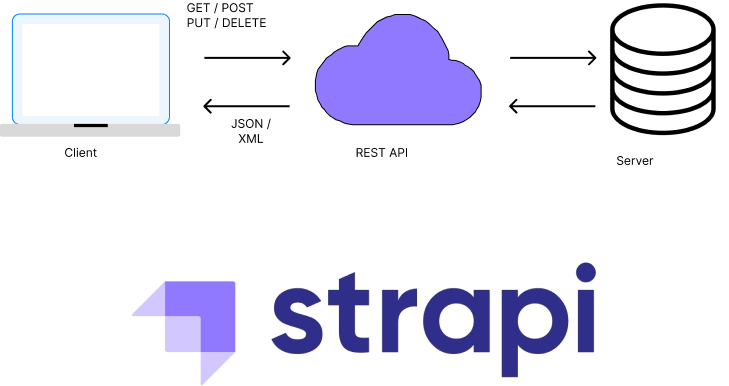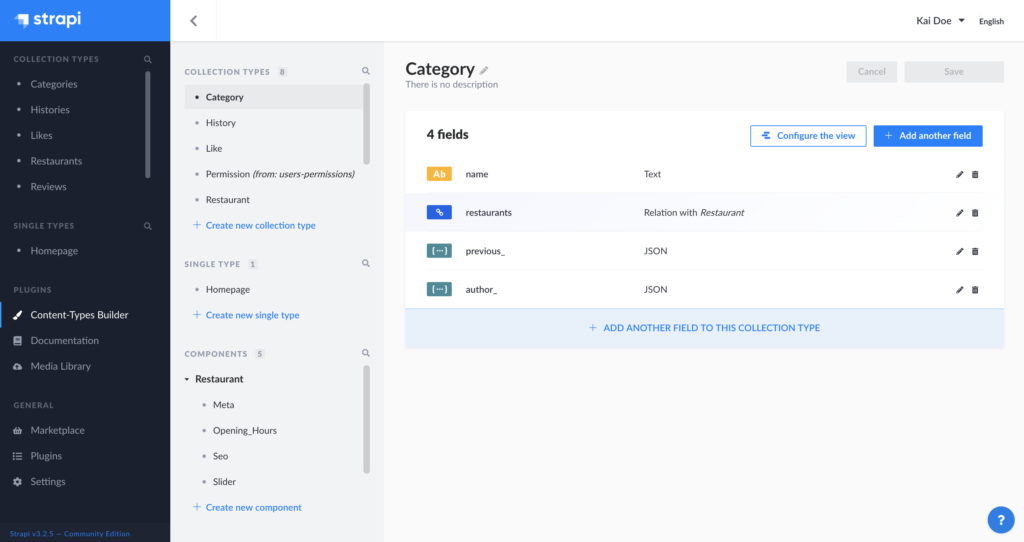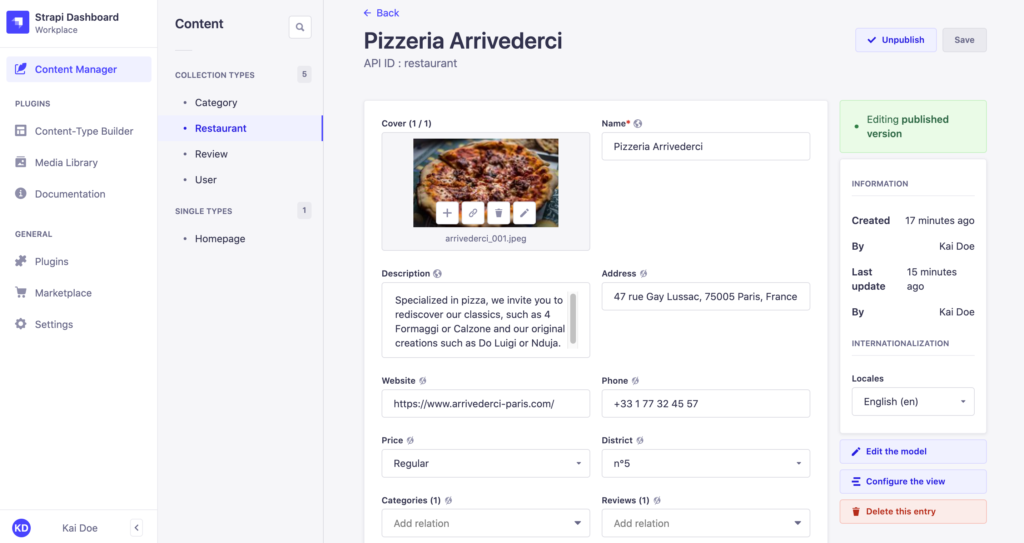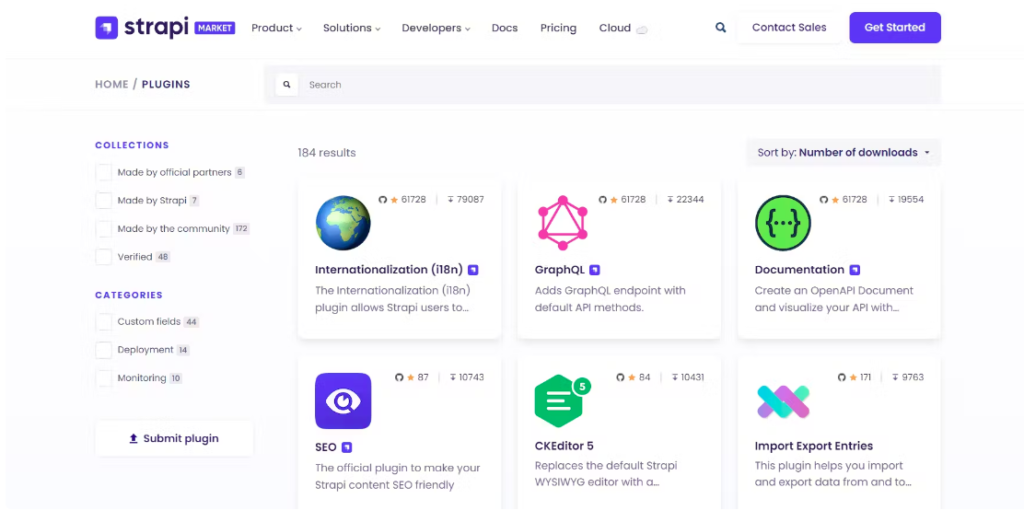Strapi Headless CMS Guide

Introduction
In today’s web development ecosystem, managing content efficiently across multiple platforms is crucial. As we move towards headless architectures, developers are shifting to API-first solutions that separate the frontend from the backend. Strapi is a robust, open-source headless CMS that lets developers manage content in the backend while providing flexibility on the frontend. In this guide, we’ll explore Strapi’s core features, the benefits of using it, and how you can set it up to power modern web projects.
What is Strapi?
Strapi is a headless content management system (CMS) that allows you to manage content via a backend UI and exposes it through an API, decoupled from any specific frontend. Unlike monolithic CMS platforms such as WordPress, where the front and backend are tightly coupled, Strapi gives you total control over the frontend, allowing you to use any framework or technology to present the content.
Strapi generates RESTful or GraphQL APIs that make it easier for your frontend to interact with the backend. Whether you’re building a traditional website, a mobile app, or even an IoT application, Strapi ensures that your content can be consumed anywhere.
Headless CMS: What Does It Mean?
A headless CMS removes the frontend from the CMS, meaning that it only deals with managing and delivering the content. It’s called “headless” because it has no predefined “head” or frontend that dictates how content is displayed. With Strapi, you have complete freedom to choose how and where your content appears—whether it’s in a web browser, a mobile app, or even a smart device.
Why Strapi?
Let’s dive deeper into the reasons Strapi is an ideal choice for modern web projects:
- Open Source and Self-hosted
Strapi is open-source, meaning you have full access to the source code and can customize it according to your needs. It’s also self-hosted, which gives you full control over your data. You can deploy Strapi on your servers or cloud platforms, ensuring that you maintain ownership of your content. - Customizable and Flexible Content Models
Strapi allows you to create custom content types to suit your project. For example, if you’re building an e-commerce site, you can create product models with attributes like price, description, and images. This flexibility allows you to define content structures that perfectly match your application’s needs. - Support for REST and GraphQL APIs
Out of the box, Strapi provides a RESTful API for each content type you create. If you prefer GraphQL, you can install the GraphQL plugin to query your content in a more flexible way. The GraphQL API allows for more optimized and precise data fetching, especially useful when dealing with nested relationships or large datasets. - Role-Based Access Control (RBAC)
Strapi’s role-based access control lets you define different levels of access for different users. For example, you can create roles for administrators, editors, and authors, each with their own set of permissions. This feature is particularly useful when managing large teams, ensuring that users only have access to the content they’re responsible for. - Internationalization (i18n)
If your project requires multilingual support, Strapi’s i18n (Internationalization) plugin allows you to create and manage content in multiple languages. This makes Strapi ideal for global projects where content needs to be served in different locales. - Extensible Through Plugins
Strapi is highly extensible thanks to its plugin system. Plugins enable additional functionality, such as GraphQL support, file uploads, email integration, documentation generation, and more. You can either use official plugins provided by the Strapi team or create custom plugins tailored to your project’s needs.
Strapi Architecture: How It Works
Strapi’s architecture is modular, providing the flexibility to tailor the system to your project’s requirements. Let’s break down the key elements
Content Types and Components

In Strapi, the core building blocks are:
- Single Types: Content types meant for pages with unique content, such as Home or About Us. There’s only one instance of this type.
- Collection Types: Content types that handle repeating data, like blog posts, products, or user profiles. You can create multiple entries in these types.
- Components: Reusable structures that allow you to modularize content across different content types. For example, a testimonial component can be used in multiple places without duplicating fields.
Content Management Interface
Strapi’s admin panel provides an intuitive interface for managing content. You can create, edit, and publish content without needing to touch the code. This separation of concerns between developers and content creators is one of the strengths of Strapi.

API Layer
Strapi auto-generates both REST and GraphQL APIs for every content type you create. This eliminates the need to manually define routes and endpoints, speeding up the development process significantly.
Hands-on with Strapi: A Step-by-Step Guide
Let’s go through a more detailed setup of Strapi, from installation to API creation.
1. Installing Strapi
To begin, you’ll need Node.js and npm installed on your machine. Once you have those, you can install Strapi via the command line.
npx create-strapi-app my-project --quickstartThis sets up a new project with SQLite as the default database, making local development easy. If you want to use a different database like PostgreSQL or MongoDB, you can specify that during installation.
2. Configuring Content Types
To create a new content type (e.g., Blog Post), follow these steps:
- Navigate to the Content Type Builder in the Strapi admin panel.
- Click Create New Collection Type and name it “Blog Post.”
- Add fields such as Title, Body, Image, and Publish Date.
Strapi will generate API routes automatically. You can further configure these APIs (e.g., restricting access, adding relations between content types) using Strapi’s intuitive UI.
3. Creating Content
Once your content type is set up, head over to the Content Manager. Click Create New Entry under Blog Posts, and add content like blog titles, body text, and images.
4. Accessing the API
By default, you can access the API for your content at the following URL
http://localhost:1337/api/blog-postsTo fetch data, you could make an HTTP request like so
curl http://localhost:1337/api/blog-posts5. GraphQL Support
Strapi’s GraphQL integration is as simple as installing the plugin
npm install @strapi/plugin-graphqlOnce installed, visit http://localhost:1337/graphql, where you can use the GraphQL playground to explore your data and make queries like
{
blogPosts {
data {
id
attributes {
title
body
publishDate
}
}
}
}Deployment Options
Strapi can be deployed in various environments, from on-premise servers to cloud providers like AWS, Heroku, DigitalOcean, or Vercel.
1. Self-Hosting
Deploy Strapi on your server using Docker, Node.js, or a cloud provider’s infrastructure (AWS, GCP, etc.). Self-hosting ensures complete control over your application and data.
2. Hosting Services for Strapi
Several providers offer managed Strapi hosting, where server maintenance, scalability, and security are handled for you. Heroku and Platform.sh are popular options for Strapi projects, providing quick and easy deployment pipelines.
Strapi Plugins and Customization
Strapi’s plugin system allows you to extend its functionality. Here are a few essential plugins

- GraphQL Plugin: For building more complex queries and fetching data in a flexible manner.
- Email Plugin: Integrate Strapi with an SMTP service to send emails directly from your application.
- Cloudinary Plugin: Store media assets like images and videos in Cloudinary instead of the local filesystem.
- Documentation Plugin: Automatically generate OpenAPI documentation for your REST endpoints, making it easier to integrate your API with other services.
You can create custom plugins by scaffolding them using Strapi’s CLI and adding functionality tailored to your application’s needs.
Common Use Cases for Strapi
1. E-commerce Platforms
Strapi is perfect for managing product catalogs, user profiles, and orders in an e-commerce platform. Its decoupled nature means you can use any front-end technology (e.g., React, Vue, or Angular) to build fast, dynamic storefronts.
2. Corporate Websites and Portfolios
Strapi makes it easy to manage corporate sites or personal portfolios, allowing for dynamic updates to content (like blog posts or portfolio items) without needing to redeploy the frontend.
3. Mobile Apps
For mobile developers, Strapi serves as a backend to manage and deliver content to iOS and Android apps. You can use React Native, Flutter, or Swift/Java to consume the Strapi API and render data in mobile views.
Conclusion
Strapi is a flexible, powerful solution for developers who want to work with a headless CMS. It integrates seamlessly with any frontend technology, whether you’re building websites, mobile apps, or multi-platform content strategies. If you need a self-hosted, customizable CMS with support for modern API standards, Strapi is definitely worth considering.
By taking control of the CMS backend while maintaining freedom on the frontend, Strapi opens up a world of possibilities for developers working on a variety of digital products.

